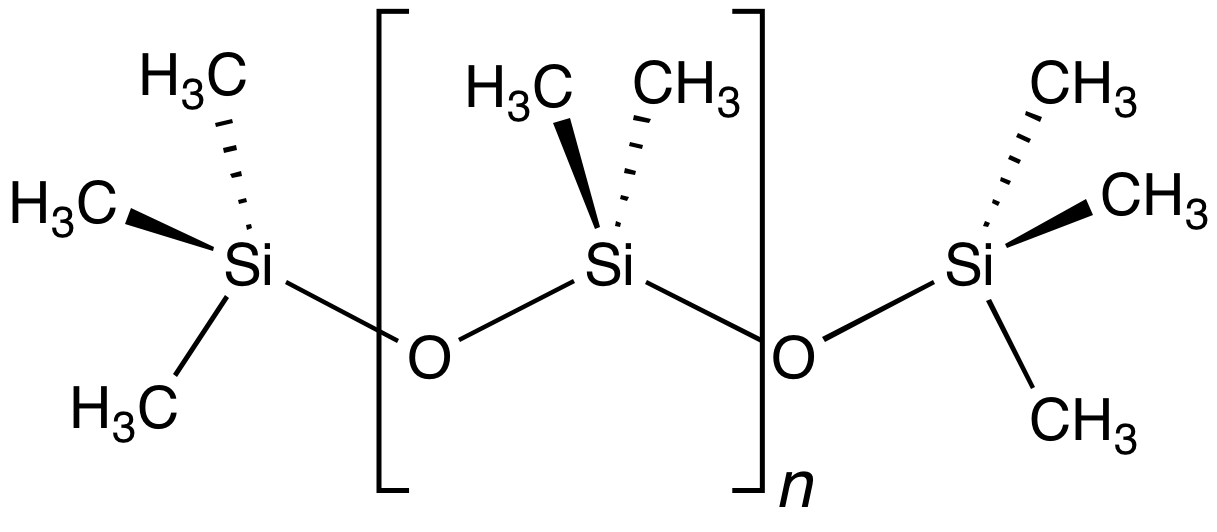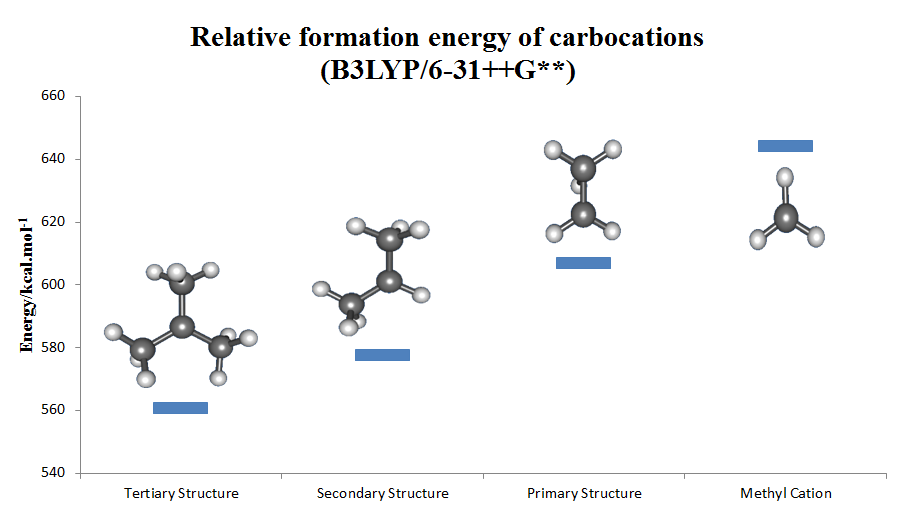|
Silylium
A silylium ion is a reactive silyl-containing cation with the formula . With three rather than the usual four bonds to Si, silylium ions are the silicon analogues of carbenium ions. They can be viewed as protonated silylenes. Early efforts to generate these cations produced salts of the pyridine complex CH3)3Si-NC5H5sup>+, the hydride-bridged species Et3Si)2Hsup>+, and the toluene complex mes)3Si(toluene)sup>+. Well-characterized silylium salts with well-defined three-coordinate silicon cations trimesitylsilylium and tris(pentamethylphenyl) . These cations are related to trityl (), with the extra methyl groups providing steric protection, compensating for the greater size of Si vs C. Its 29Si NMR chemical shift is 225.5 ppm, downfield of TMS, which indicates that the cation is quite "naked". Trimethylsilyl trifluoromethanesulfonate (Me3SiOTf), normally considered a source of electrophilic silicon, has a 29Si NMR shift of 43 ppm. Salts of and have been cry ... [...More Info...] [...Related Items...] OR: [Wikipedia] [Google] [Baidu] |
Organosilicon Compound
Organosilicon chemistry is the study of organometallic compounds containing carbon–silicon bonds, to which they are called organosilicon compounds. Most organosilicon compounds are similar to the ordinary organic compounds, being colourless, flammable, hydrophobic, and stable to air. Silicon carbide is an ''inorganic'' compound. History In 1863, Charles Friedel and James Crafts made the first organochlorosilane compound. The same year, they also described a "polysilicic acid ether" in the preparation of ethyl- and methyl-o-silicic acid. Extensive research in the field of organosilicon compounds was pioneered in the beginning of 20th century by Frederic S. Kipping. He also had coined the term "silicone" (resembling ''ketones'', though this is erroneous) in relation to these materials in 1904. In recognition of Kipping's achievements, the Dow Chemical Company had established an award in the 1960s that is given for significant contributions to the field of silicon chemistry ... [...More Info...] [...Related Items...] OR: [Wikipedia] [Google] [Baidu] |
Silylene
Silylene is a chemical compound with the formula SiR2. It is the silicon analog of carbene. Silylene rapidly when condensed. Silylenes are formal derivatives of silylene with its hydrogens replaced by other substituents. Most examples feature amido (NR2) or alkyl/aryl groups. Silylenes have been proposed as reactive intermediates. They are carbene analogs. Synthesis and properties Silylenes have been generated by thermolysis or photolysis of polysilanes, by silicon atom reactions ( insertion, addition or abstraction), by pyrolysis of silanes, or by reduction of 1,1-dihalosilane. It has long been assumed that the conversion of metallic Si to tetravalent silicon compounds proceeds via silylene intermediates: :Si + Cl2 → SiCl2 :SiCl2 + Cl2 → SiCl4 Similar considerations apply to the direct process, the reaction of methyl chloride and bulk silicon. Early observations of silylenes involved generation of dimethylsilylene by dechlorination of dimethyldichlorosilane: ... [...More Info...] [...Related Items...] OR: [Wikipedia] [Google] [Baidu] |
Weakly Coordinating Anion
Anions that interact weakly with cations are termed non-coordinating anions, although a more accurate term is weakly coordinating anion. Non-coordinating anions are useful in studying the reactivity of electrophilic cations. They are commonly found as counterions for cationic metal complexes with an unsaturated coordination sphere. These special anions are essential components of homogeneous alkene polymerisation catalysts, where the active catalyst is a coordinatively unsaturated, cationic transition metal complex. For example, they are employed as counterions for the 14 valence electron cations C5H5)2ZrRsup>+ (R = methyl or a growing polyethylene chain). Complexes derived from non-coordinating anions have been used to catalyze hydrogenation, hydrosilylation, oligomerization, and the living polymerization of alkenes. The popularization of non-coordinating anions has contributed to increased understanding of agostic complexes wherein hydrocarbons and hydrogen serve as ligand ... [...More Info...] [...Related Items...] OR: [Wikipedia] [Google] [Baidu] |
Carbenium Ion
The carbenium ion is a kind of cation, positive ion with the structure RR′R″C+, that is, a chemical species with carbon atom having three covalent bonds, and it bears a +1 formal charge. Carbenium ions are a major subset of carbocations, which is a general term for diamagnetic carbon-based cations. In parallel with carbenium ions is another subset of carbocations, the carbonium ions with the formula R5+. In carbenium ions charge is localized. They are isoelectronic with monoboranes such as B(CH3)3. Nomenclature Reactivity Carbenium ions are generally highly reactive due to having an incomplete octet rule, octet of electrons; however, certain carbenium ions, such as the tropylium cation, tropylium ion, are relatively stable due to the positive charge being delocalised between the carbon atoms.(It can even exist stably in aqueous solution.) Rearrangements Carbenium ions sometimes rearrangement reaction, rearrange readily. For example, when pentan-3-ol is heated with aq ... [...More Info...] [...Related Items...] OR: [Wikipedia] [Google] [Baidu] |
Methyl
In organic chemistry, a methyl group is an alkyl derived from methane, containing one carbon atom bonded to three hydrogen atoms, having chemical formula (whereas normal methane has the formula ). In formulas, the group is often abbreviated as Me. This hydrocarbon group occurs in many organic compounds. It is a very stable group in most molecules. While the methyl group is usually part of a larger molecule, bonded to the rest of the molecule by a single covalent bond (), it can be found on its own in any of three forms: methanide anion (), methylium cation () or methyl radical (). The anion has eight valence electrons, the radical seven and the cation six. All three forms are highly reactive and rarely observed. Methyl cation, anion, and radical Methyl cation The methylium cation () exists in the gas phase, but is otherwise not encountered. Some compounds are considered to be sources of the cation, and this simplification is used pervasively in organic chemistry. For exam ... [...More Info...] [...Related Items...] OR: [Wikipedia] [Google] [Baidu] |
Trityl
Triphenylmethane or triphenyl methane (sometimes also known as Tritan), is the hydrocarbon with the chemical formula, formula (C6H5)3CH. This colorless solid is soluble in nonpolar organic solvents and not in water. Triphenylmethane is the basic skeleton of many synthetic dyes called triarylmethane dyes, many of them are pH indicators, and some display fluorescence. A trityl group in organic chemistry is a triphenylmethyl group Ph3C, e.g. triphenylmethyl chloride (trityl chloride) and the triphenylmethyl radical (trityl radical). Preparation Triphenylmethane was first synthesized in 1872 by the German chemist August Kekulé and his Dutch student Antoine Paul Nicolas Franchimont (1844–1919) by heating diphenylmercury (Hg(C6H5)2, ''Quecksilberdiphenyl'') with benzal chloride (C6H5CHCl2, ''Benzylenchlorid''). Triphenylmethane can be synthesized by Friedel–Crafts reaction from benzene and chloroform with aluminium chloride catalyst: :3 C6H6 + CHCl3 → Ph3CH + 3 HCl Alternatively, ... [...More Info...] [...Related Items...] OR: [Wikipedia] [Google] [Baidu] |
Trimethylsilyl Trifluoromethanesulfonate
Trimethylsilyl trifluoromethanesulfonate (TMSOTf) is an organosilicon compound with the formula . It is a colorless moisture-sensitive liquid. It is the trifluoromethanesulfonate derivative of trimethylsilyl. It is mainly used to activate ketones and aldehydes in organic synthesis. Reactions TMSOTf is quite sensitive toward hydrolysis: : It is far more electrophilic than trimethylsilyl chloride. Related to its tendency to hydrolyze, TMSOTf is effective for silylation of alcohols: : A common use of is for the preparation of silyl enol ethers. One example involves the synthesis of the silyl enol ether of camphor: : It was also used in Takahashi Taxol total synthesis and in chemical glycosylation reactions. Trimethylsilyl trifluoromethanesulfonate has a variety of other specialized uses. It has been used to install tert-alkyl groups on phosphine (R = alkyl): :PH3 + R3C–OAc + Me3SiOTf → R3C)2PH2Tf Deprotection of Boc-protected amines can be achieved using ... [...More Info...] [...Related Items...] OR: [Wikipedia] [Google] [Baidu] |
Carborane
Carboranes (or carbaboranes) are electron-delocalized (non-classically bonded) clusters composed of boron, carbon and hydrogen atoms.Grimes, R. N., ''Carboranes 3rd Ed.'', Elsevier, Amsterdam and New York (2016), . Like many of the related boron hydrides, these clusters are Polyhedron, polyhedra or fragments of polyhedra. Carboranes are one class of heteroboranes. In terms of scope, carboranes can have as few as 5 and as many as 14 atoms in the cage framework. The majority have two cage carbon atoms. The corresponding carbon, C-alkyl and boron, B-alkyl analogues are also known in a few cases. Structure and bonding Carboranes and boranes adopt 3-dimensional cage (Cluster chemistry, cluster) geometries in sharp contrast to typical organic compounds. Cages are compatible with sigma—delocalized bonding, whereas hydrocarbons are typically chains or rings. Like for other electron-delocalized polyhedral clusters, the electronic structure of these cluster compounds can be described by ... [...More Info...] [...Related Items...] OR: [Wikipedia] [Google] [Baidu] |
Silanide
A silanide is a chemical compound containing an anionic silicon(IV) centre, the parent ion being . The hydrogen atoms can also be substituted to produce more complex derivative anions such as tris(trimethylsilyl)silanide (hypersilyl), tris(''tert''-butyl)silanide, tris(pentafluoroethyl)silanide, or triphenylsilanide. The simple silanide ion can also be called trihydridosilanide or silyl hydride. Formation The simplest trihydridosilanides can be produced from a triphenylsilanide in a reaction with hydrogen or at standard conditions. The triphenylsilanide can be made in a reaction of Ph3SiSiMe3 with the metal ''tert''-butoxy compound. Reacting hydrogen with potassium triphenylsilyl can yield potassium silanide. Other method to form silanides are to heat a heavy metal silicide with hydrogen, or react the dissolved metal with silane. Atomic metals can react directly with silane to yield unstable molecules with formulae. These can be condensed into a noble gas matrix. With titani ... [...More Info...] [...Related Items...] OR: [Wikipedia] [Google] [Baidu] |
Cations
An ion () is an atom or molecule with a net electrical charge. The charge of an electron is considered to be negative by convention and this charge is equal and opposite to the charge of a proton, which is considered to be positive by convention. The net charge of an ion is not zero because its total number of electrons is unequal to its total number of protons. A cation is a positively charged ion with fewer electrons than protons (e.g. K+ ( potassium ion)) while an anion is a negatively charged ion with more electrons than protons (e.g. Cl− ( chloride ion) and OH− (hydroxide ion)). Opposite electric charges are pulled towards one another by electrostatic force, so cations and anions attract each other and readily form ionic compounds. Ions consisting of only a single atom are termed ''monatomic ions'', ''atomic ions'' or ''simple ions'', while ions consisting of two or more atoms are termed polyatomic ions or ''molecular ions''. If only a + or − is present, it indica ... [...More Info...] [...Related Items...] OR: [Wikipedia] [Google] [Baidu] |
Reactive Intermediates
In chemistry, a reactive intermediate or an intermediate is a short-lived, high-energy, highly reactive molecule. When generated in a chemical reaction, it will quickly convert into a more stable molecule. Only in exceptional cases can these compounds be isolated and stored, e.g. low temperatures, matrix isolation. When their existence is indicated, reactive intermediates can help explain how a chemical reaction takes place. Most chemical reactions take more than one elementary step to complete, and a reactive intermediate is a high-energy, hence unstable, product that exists only in one of the intermediate steps. The series of steps together make a reaction mechanism. A reactive intermediate differs from a reactant or product or a simple reaction intermediate only in that it cannot usually be isolated but is sometimes observable only through fast spectroscopic methods. It is stable in the sense that an elementary reaction forms the reactive intermediate and the elementary reacti ... [...More Info...] [...Related Items...] OR: [Wikipedia] [Google] [Baidu] |






